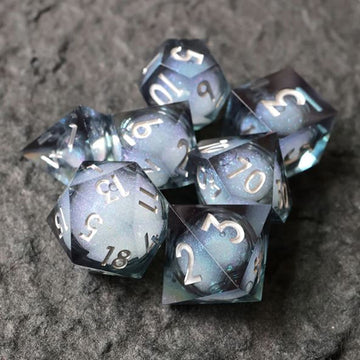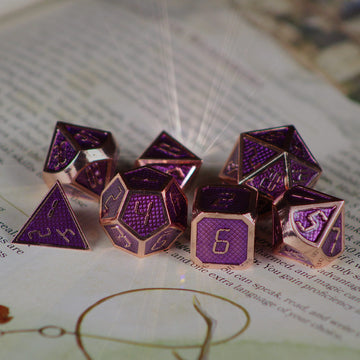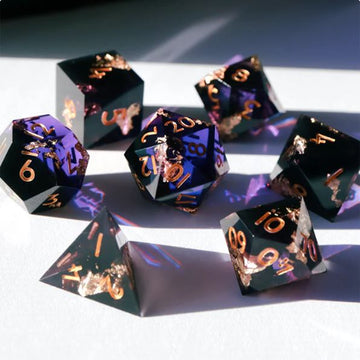The Best Ways in Dungeons and Dragons to Maintain Your Oath and Smite Heretics
By Riley Rath
The D&D 5e Paladin: holy... righteous... zealous... glorious. Offering a gentle hand to widows and orphans while ruthlessly destroying bandits and the undead. They are durable, powerful, and self-sufficient. They can heal, intimidate, fight, support, and defend.
Translation: they are perfect for min-maxing.
Your path to hacking the 5e Paladin, optimizing them for any situation, depends on what you want:
- Do you want to be the foundation on which the party lives or dies?
- Do you want to deliver the single biggest blow that lich has ever seen, so huge it actually might trigger the massive damage table?
- Do you want to have an answer to every situation, so long as that situation demands zero flexibility and sneakiness?
In this article, I'll help you hack the 5e rules so your Paladin is as powerful as they can be.
I'll tackle some of the basics... offer suggestions on multiclassing, feats, weapons, and armor... and show you the best subclasses for attack and defense builds.
Enough talk... let's start bringing the might of Mt. Celestia down on foes.
Need Paladin Inspired Dice?
We Recommend The Paladin
Table of Contents
Setting Up Your 5e Paladin
- Stats
- Race
- Background and Role-Playing
Equipping Them for Battle
- Armor
- Fighting Style and Weapons
- Magic Items
Hacking by Mixing and Matching
- Multiclassing
- Feats
Best Paladin Subclasses for Attack
- The Oath of Vengeance
- The Oath of Conquest
Best Paladin Subclasses for Defense
- The Oath of the Crown
- The Oath of Redemption
Conclusion: The Nova
Setting Up Your 5e Paladin
Before you hack the 5e Paladin, you'll need a proper setup: stats, race, background... the works.
Stats

Technically, Paladins can be based on either Strength or Dexterity when it comes to combat. However... Paladins have three things about them that cause virtually every player to make them strength based:
- They do not have access to the two long-range fighting styles: Archery or Thrown Weapon. All of their fighting styles are geared toward close combat.
- A Paladin's signature ability, smiting, cannot be used on long range weapons.
- Many of the Paladin's Aura abilities impact other player characters nearby... warriors with long ranged weapons are often on their own.
You cooooould attempt to create a finesse Paladin... it's been done... hell, I've done it. But 99% of Paladins are in the thick of a skirmish because that is what they are best at. So if you want to truly hack the 5e Paladin, you need to focus on Strength.
When building a Paladin for Strength, you'll have to keep three main stats in mind: Strength, Constitution, and Charisma.
Strength is everything to a Paladin. It enables you to wear the necessary armor, carry wounded allies, and deal devastating blows in combat.
Though often holy like a Cleric, Charisma is the modifier for spellcasting and most of your Paladin abilities. Since Paladins are capped at 5th level spellcasting, a high Charisma modifier is essential.
Constitution ups your hit points... which every character and class needs. Make sure this is no lower than a 14.
For example, if you were to do a point-buy for your level 1 Paladin, you might want to consider this layout: Str 15, Dex 8, Con 15, Int 8, Wis 8, Cha 15.
You can raise your stats at levels 4, 8, 12, and 19 for a more balanced build.
Race

Image © Wizards of the Coast
Now, if you're DM is allowing the "Customizable Origin" from Tasha's Cauldron of Everything, then any race will work well for a Paladin (just add +2 to Strength or Con and +1 to Cha).
But many DMs remain leery of throwing every fantasy stereotype out the window. Some believe campaigns are better when you stick with the 'traditional' races. If that is the case, here are some of the best:
- Aasimar: Thematically, this is the quintessential Paladin... they are literally of the divine realms! Darkvision and increases to your Charisma don't hurt either.
- Dwarf: All give you a +2 to CON. But Mountain Dwarf has the added benefit of +2 to Strength, and Duergar gives you a +1 and the ability to become, like, super duper big in combat. Which, when you are swinging an already-big-ass sword... helps.
- Earth Genasi: Increases in Strength and Constitution, and you can fight well in difficult terrain.
- Half-Elf: Mechanically, this is the quintessential Paladin. +2 to CHA and you can choose to add +1 to STR and CON! It's perfect!
- Human: The standard human is... well... standard. They work with any class. Unsurprisingly, the human variant is even better with any class (customize with a feat).
- Half-Orc: Bonuses to Strength and Constitution help half-orcs fit, but their big contribution comes from "Relentless Endurance" and "Savage Attacks." Both will not only keep you in the thick of combat, but make sure everyone around you feels your presence as well.
Background and Role-Playing

Most backgrounds are there for flavor more than anything else... but some provide skills that are particularly helpful. For example... for some reason, the Paladin does not naturally have access to the Athletics skill. Well, the Soldier and City Watch backgrounds each take care of that.
Knight of the Order makes the most thematic sense... but this is a "Paladin Hack," the biggest hack here is the Faction Agent. Now, this background was definitely designed for, like, spies and assassins and stuff... buuuuuut being able to pick up Intimidation is a big boost, and two languages multiplies your opportunities to use your CHA skills!
Finally, when it comes to the Paladin, flaws and personality are actually important...
Usually, hacking a 5e character class is all about the mechanics... stats and abilities and whatnot. But the Paladin is the lone exception: the subclass you choose comes with role-playing... "requirements."
Because Paladins gets their magical abilities from a righteous oath, they need to live up to that righteous oath. Stop living up to the oath and it is expected that the DM takes away your powers.
We'll get to the subclasses at the end of this post, but make sure you choose a subclass that you want to role-play! Because if the requirements constrain you into a type of character your loathe, it doesn't matter how much damage they get with an executioner's blade... you'll still hate playing the character.

Equipping Them for Battle
Armor

Once you have your stats ready, you'll need to consider your armor and weapons. There are many options to choose from, but some are best for optimizing your defense and your attack.
Because you will likely have a very low Dexterity, you will likely be one of the last in the initiative order and will have a hard time dodging a lot of the Area of Effect spells. In other words... you'll be taking some damage.
The Paladin compensates for this with the 1d10 when rolling for health, but the thing that is in your control as a player is your Armor Class. You are going to want to get that as high as possible as quickly as possible.
First, carry a shield. Yes, some weapons will not allow you to use your shield, but always have a shield. Most DMs allow you to start with one, even at level 1, and it bumps your AC by 2. Take it.
Second, MAX OUT ON ARMOR. I don't care if it has been sitting in a dragon's belly for a millennia... get plate armor as soon as you can. This will give you a base 18 AC, and if you combine that with a shield, you'll have a 20 AC. As a matter of fact, this is the best armor a Paladin an have, but it ain't cheap so be ready to work for it.
While you wait for plate armor, a popular work around is getting Adamantine Armor. It doesn't raise your AC nearly as much, but... it reduces any critical hit to a normal hit... which is often the difference between life and death. It is an uncommon magic item, so its availability in your fantasy world depends on your DM.
Fighting Style and Weapons

Concerning weapons... the Paladin can use ANY weapon. No reason to be stingy. In fact, you should have, somewhere, a favored weapon that does each primary martial damage type: bludgeoning, piercing, and slashing.
That said, you'll also need to consider your preferred weapon: whatever weapon you plan on using most of the time and in the most dangerous of situations. This should be the weapon you hack your 5e Paladin around, and use in the most deadly of situations.
The main question you need to ask yourself is this: do you want to have a shield or not?
The answer to this question will determine your Fighting Style. The three best options for Paladin are Defense, Dueling, and Great Weapon Fighting.
- Defense: Add 1 to your AC. Good if you want crazy high AC or do not have a shield due to your two-handed weapon.
- Dueling: +2 bonus to damage rolls when wielding a weapon in one hand. An obvious choice if you wield a shield.
- Great Weapon Fighting: Lets you reroll 1's and 2's when you roll damage.
So, once again, the weapon for your 5e Paladin hack depends on what flavor of Paladin you prefer.
- If you are using a shield, go longsword, warhammer, lance, or spear. Longsword and warhammer have the added bonus of being versatile (you can use them as two-handed weapons if you want to be super cool).
- If you are choosing a two-handed weapon, the greatsword and greataxe would be the most powerful.
- If you want the reach of a polearm, then a halberd, pike, or glaive would be the best. The again, if you wanted to choose a one-handed weapon, then a longsword, morningstar, or warhammer would pack a serious punch.
Magic Items
Granted, this might not be in your control. If your world is low magic, there might only be one or two magic items. If your world is high magic, but there are not magic shops for you to buy/sell/trade at, then its going to be awfully hard to come by anything you want.
But... you might have a DM that is "open to suggestions" and will accept a magic item wish list. And, perhaps, they will be benevolent enough to bestow upon you one or two of the following magic items:
Adamantine Armor (Uncommon): As mentioned above, this negates any critical hit. Honestly, its amazing you can use this so early and easily.
ANY +1 Weapon (Uncommon): The +1 to hit and damage is obviously huge, but the bigger thing is that it is MAGICAL. You can use any weapon, but you NEED at least one that can still hit a monster that is resistant to non-magical damage.
Cloak of Displacement (Rare): If you can't dodge... you might as well make it even harder for someone to hit you.

Image © Wizards of the Coast
Ring of Spell Storing (Rare): Helpful for any caster, but especially when the Paladin only recovers slots after a long rest.

Image © Wizards of the Coast
Dwarven Thrower (Very Rare): Paladin has no long range weapons? No worries... use this. Oh, and it comes right back.

Image © Wizards of the Coast
Belt of Giant Strength (Legendary): The only way to increase your ability scores above 20 is with magic items. The Cloud and Storm ones are a big, big deal.
Hacking by Mixing and Matching
Multiclassing
Multiclassing can offer many benefits to characters, especially when you are hacking a specific class to maximize its potential.
However, keep in mind that multiclassing is a cost/benefit situation: you benefit from the abilities of a different class, but at the cost of missing out on the Paladin's abilities at higher levels. Because of this, no one multiclasses carelessly... if you want to hack your Paladin to be as powerful as possible, you will need to take the time to research what works best and fits your vision.
Fortunately, there are many multiclassing choices that work great with a Paladin. But which ones are the best for hacking? As always, in a game that has near infinite customization, the answer is... "depends"!
Here are the four most powerful multiclassing options:
Warlock

Because they share a primary stat (Charisma), one of the best choices is the Warlock class. They are the ultimate short rest class, which can balance out the Paladin's dependence on getting a good night's sleep. And yes... smites are warlock spell slot compatible. Choose Pact of the Blade... get to 3rd level... take Improved Pact Weapon... and BOOM: you got a +1 magic weapon.
In fact, the Warlock is SO good that some go as far as to say that it was a class intended for multiclassing. It also works well thematically, as a Paladin's devotion to an ideal is just a hop, skip, and a jump to a pact with a far off patron!
Barbarian
Barbarian seems like a good choice (cuz they are NOT boring). The Path of the Berserker will give you an extra attack and the Reckless Attack ability will give you advantage on a particularly important smite.
Buuuuuuut... virtually everything about the Barbarian works because they are about as naked as a newborn: no armor. In that sense, the Barbarian and the Paladin are polar opposites. Long story short: AVOID.
Fighter
The Paladin is basically just a Fighter that prays a lot/really likes the royal family. So at first glance, it may seem like there is too much overlap to make it worthwhile. No way Jose.
Fighter/Paladin multiclass is VERY popular. A strength based Fighter shares all the same primary stats (STR and CON) and you get to choose from the Fighter's more expansive fighting styles. You get FURTHER healing abilities (Second Wind) and you get proficiency in CON saving throws.
But the big kahuna is the "Action Surge." If you have saved up your smites... and saved up your action surge... then you can go NOVA and absolutely obliterate any enemy... no matter how numerous or how big those enemies may be.
Rogue

A few levels in Rogue come with some problems... and opportunities. With the Assassin archetype, you not only have the stacking d6 sneak attack damage, but also have advantage against enemies that haven't taken a turn yet. Additionally, if you hit a surprised enemy it counts as a critical hit. In other words, like the Fighter, you can do some serious damage with a single hit.
However... Rogues notoriously rely on Dexterity. Many of their abilities also rely on attacking enemies that have NOT taken a turn in the initiative order. And since Paladins, in all that armor, are about as quick and nimble as a locomotive... yeah, that's not going to happen.
Feats

Feats are things you take instead of ability score improvements. Usually, people only take them if they had the luxury of rolling high stats. However, if you are really trying to hack the 5e Paladin, choose the Human-Variant so you get at least one feat.
First of all... I know it's tempting... but DO NOT take Great Weapon Master. The math doesn't check out (average of 1pt more damage per turn). Getting an ability score improvement is WAY better.
One of the most popular is Polearm Master and here is why:
- As a Paladin, you are in the middle of combat
- That means enemies are all around you
- If you use a weapon with reach (polearm, glaive, etc) you can attack people 10ft away
- With Polearm Master, you can use a bonus action to attack with the back of your weapon
- And... ANYONE THAT ENTERS YOUR REACH PROMPTS AN OPPORTUNITY ATTACK.
That means that before an enemy tries to attack you, you can attack them FIRST using your reaction. And given that you can add a divine smite on that... just... OOOOOF.
And if you rolled high enough stats, then take this SECOND feat: Sentinel. It plays great with Polearm Master. For example, Polearm Master grants an opportunity attack when an enemy enters the reach of your weapon and Sentinel reduces a creature's speed to zero when you hit them with an opportunity attack. Together, you can SERIOUSLY control the battlefield.
Another good, but not quite as offensive, combo is Heavy Armor Master and Shield Master. This makes you a defensive specialist. Together, they reduce every single non-magical attack by 3 (making it better at lower levels) AND solve the pesky "Dexterity saving throw" problem that can really ruin a Paladin's day.
Another honorable mention: Inspiring Leader. Cuz being an honorable Paladin, it makes sense that you would give honorable, inspiring speeches. Plus, temporary hit points are always yummy.
All in all, the most important thing to remember when building your Paladin is what will be fun for you and what will be helpful to the party. Often, these questions can be answered with the type of Paladin you want to play.
Need Dice for Your Paladin?
We Recommend The Gods Are Athirst

Best Paladin Subclasses for Maximizing Attack
In general, there are some subclasses better for attack and defense hacks, but choose the subclass that best fits your goal.
Hacking a paladin for attack means focusing on dealing the most damage possible and killing your enemies faster than they can kill you. To put it another way: you may not even have to use Lay on Hands for your party members if you slaughter every enemy in sight.
There are two subclasses that would be the best for this: Oath of Vengeance (Player's Handbook) and Oath of Conquest (Xanathar's Guide to Everything).
The Oath of Vengeance

The Oath of Vengeance is one of the best subclasses for this hack. These paladins want to punish those who have committed deep sin. Their own purity is nothing compared to delivering swift justice.
For one thing, this oath offers several damage boosts. For example, the spells Bane and Hunter's Mark offer the most benefit. Bane can force enemies to subtract a d4 from their attack or saving throws, while Hunter's Mark allows you to mark an enemy as your quarry, dealing an extra 1d6 damage with every weapon attack.
Furthermore, Relentless Avenger at 7th level lets you prevent your foes from escaping your wrath because you can move up to half your speed after an attack of opportunity (remember the feat Polearm Master!) As a bonus, your movement with this skill doesn't provoke any attacks of opportunity against you, allowing you to target fleeing enemies.
Ultimately, when dealing massive amounts of damage through melee attacks and primarily using spells such as Hunter's Mark, you'll want your Paladin to have high Strenght and high Constitution. Your high Charisma score could be beneficial with spells later on, or if you multiclass into Warlock. Until then, focus on dealing damage and sending hordes of enemies fleeing in terror.
The Oath of Conquest

Image © History.com
The Oath of Conquest is also a good attack-based subclass. These Paladins fight for glory, to crush the forces of chaos and to mock mercy as they destroy their enemies with their incredible might.
Each spell is a benefit to this subclass, but the most helpful would be Spiritual Weapon at 5th level. While you swing your mighty weapon down on a foe, you can use your bonus action to cast this spell and deal damage to creatures far away from you.
Additionally, the Channel Divinity options also add to this class's usefulness by controlling the tide of battle and dealing damage. For example, if your DM sends a horde of goblins at you, use your Channel Divinity: Conquering Presence to force each enemy within 30 feet if you to make a Wisdom save. If they fail, they become frightened and run away from you, giving you and your party space to heal and regroup.
Likewise, at 7th level you emit an Aura of Conquest 10 feet from you in every direction. If a creature becomes frightened of you and they are in the aura, their speed drops to zero and they will take psychic damage equal to half your level. You can combine this with Conquering Presence or with the spell Fear to fully utilize its capabilities.
On the whole, there are more benefits at higher levels, such as Scornful Rebuke which punishes anyone that attacks you. Yet even at lower levels, this subclass not only allows a Paladin to be a heavy hitter, but also allows them to control the flow of battle through the use of fear. Where most Paladins would struggle with large groups of enemies, this Paladin laughs in the face of adversity.
Need Dice for Your Paladin?
We Recommend Thunder of Dragons Silver
Best Paladin Subclasses for Maximizing Defense
Not all Paladins need to destroy a battlefield and be soaked in blood. If you would prefer to protect your fellow party members while still being capable of dealing damage, then a defensive hack would be the best.
Oath of the Crown (Sword Coast Adventurer's Guide) and Oath of Redemption (Xanathar's Guide to Everything) are the two best subclasses for defending your fellow party members.
The Oath of the Crown

The Oath of the Crown is a great defensive option. These Paladins believe in protecting and upholding the just laws of civilization. They are the guardians of cities and the knights against the chaotic tides threatening all that civilization has built.
Overall, the best spell this subclass offers is Compelled Duel at 3rd level. This forces an enemy to make a Wisdom saving throw, and if they fail they have disadvantage on all attacks against anyone but you. Aura of Vitality is also good, but it may take a while to reach 9th level, taking away precious multiclassing time.
Of course, a benefit from this oath comes from their Channel Divinity, such as Champion Challenge. This forces all enemies that fail a wisdom saving throw to be focused on you compared to your squishy allies without expending a spell slot. This will allow your party vital time to heal, regroup, and attack the enemy.
By the same token, Divine Allegiance at 7th level is the main defensive ability of this oath. When a creature within 5 feet of you takes damage, you can transfer that damage to yourself. While you may not be able to reduce that damage in any way, you can save a party member's life if you have the HP to spare.
Primarily, this oath is good for both attack and defense. You defend your party members, take damage for them, and defeat enemies all at once. As long as you have plate armor and high Constitution, you should be fine.
The Oath of Redemption

The Oath of Redemption is another great defensive subclass, but these Paladins use violence as a last resort. They want to turn evil creatures to the light, but they will fight if it means that violence saves lives.
There are many beneficial spells to this class, such as Counterspell一one of the strongest spells in DnD. However, Counterspell is gained at 9th level, and with Paladins being capped at 5th level spellcasting, it loses some of its benefit against stronger spells.
In contrast, the spells Sleep and Sanctuary are gained at 3rd level and they have their benefits. Sleep can be used to peacefully resolve combat and escape without any lives being lost. Sanctuary can be used to protect an injured ally; however, the ally that is under Sanctuary cannot make any spells or attacks that will harm an enemy unless they want to end the spell early.
However, the best defensive option for this Paladin comes from Channel Divinity: Rebuke the Violent. If an attacker within 30 feet of you deals damage to someone other than you, you can use your reaction to force them to make a Wisdom saving throw. On a failed save, the attacker takes radiant damage equal to what they just dealt.
Finally, Aura of the Guardian allows you to protect your party members from harm if they are within 10 feet of you at the sacrifice of your own health. This allows you to be a protective, powerful wall for your party members, capable of dealing damage but focusing on defense.
In the long run, as you steadily level up, more and more benefits will become available to you and your mission to be the perfect shield for your allies. With plate armor, a shield, the Heavy Armor Master feat, and a high Constitution, you can withstand mass damage while slowly frustrating your DM and empowering your fellow players.
Conclusion: The Nova...

There are a lotta ways you can hack a Paladin... no one size fits all. Remember to discuss with your party what they are playing, and consider building your Paladin to help them.
However...
Of all the classes, Paladin's are the most capable of being a "Nova" build. This build is when you want to do a TOOOOON of damage with one, single attack.
Most Nova builds include the Paladin for one reason: SMITE.
Never underestimate your smite. Don't go a long rest without using them all.
Aaaaaalll that said... keep in mind that you should have fun playing your Paladin and that these are suggestions, not absolute rules. Remember to have fun and to play what makes you happy.
If you are interested in learning more about the Paladin subclasses and building your own hack, check out this helpful guide from DnDBeyond!
Riley Rath

Riley is a freelance tabletop games copywriter, content writer, and marketer based out of Spokane, WA. When not playing or writing about board games or DnD, he is busy with family, hiking, cooking, and gardening... very hobbit-like for a 6'4'' dude.









